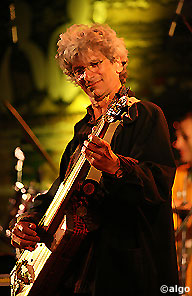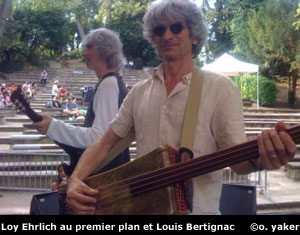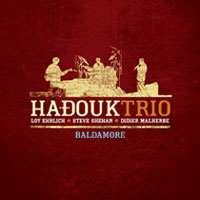Loy Ehrlich’s music fusion
Itinerary of a trailblazer
Paris
04/02/2011 -

Then there’s the West African Cosmos LP that Loy participated in next. Released in 1976 on the CBS label, it appeared in the Marginal collection catalogue. The blurb on the back states that it was “created as an introduction to music and song movements outside the traditional circuit”. Those words set the tone. On this musical oddball, the Parisian played with two Senegalese: Umban Ukset, the new name chosen by Emmanuel Gomez who made his reputation singing for the Dakar Star Band, and Wasis Diop.
Moroccan maiden voyage
A love affair led him to Essaouira, where he discovered the Gnawa. On Marrakech’s Jamaa el Fna Square, an old Gnawi used to set up shop at nightfall. He would turn his bicycle upside down and play, often accompanied by karkabous (a type of metal castanets). “The effect on me was life-changing, as if it brought out a hidden side of me. I felt that I too could probably transmit the power of music,” Loy analyses today.

So he made his decision: he would do what it took to make music. It was something he had been thinking of since childhood. His resources amounted to a dozen years studying classical piano and a bit of guitar, and an ability to turn his hand to most things. He started off with progressive rock – Alan Jack Civilisation, then Crium Delirium, and established some important friendships: with Louis Bertignac, not yet part of Téléphone, and Didier Malherbe, saxophonist with Gong and future member of the Hadouk Trio. “We became good friends in 1970. He was already an established musician, but I was looking after a goats to help the local farmers and earn a bit of cash,” he says, remembering the shack he bought in rural Provence.
Alan Peters and René Lacaille

The mainland Frenchman got on particularly well with Peters, who soon became inseparable from his takamba, the Sahelian guitar Loy gave him on his return from Timbuktu. He formed the group Carrousel, but returned to Paris after five years in the Indian Ocean, with the impression that he had accomplished what he wanted to do there.
He then got on the wagon that Touré Kunda had already set moving, solicited by one of Touré’s brothers who had played with West African Cosmos. The African tour, like the Casamance concert immortalised by the album Paris Ziguinchor Live, remains a powerful memory, due as much to the rock star welcome the group received as to the music they managed to cook up. “We completely mastered the repertoire, we were on really good form,” asserts Loy.
As soon as he felt the team spirit was fading, he decided to leave. Louis Bertignac was at the same stage with Téléphone, and suggested he join his new group, Les Visiteurs. The return to rock lasted two years. He had just decided to put an end to the partnership when the phone rang: it was Youssou N’Dour. He needed Loy to participate in the Amnesty International tour, with Peter Gabriel, Sting, Bruce Springsteen and the others. “Playing at Wembley in one of the biggest stadiums in the world was a real high point of that period for me.”
Hadouk trio
Bertrand Lavaine
Translation : Anne-Marie Harper
18/03/2010 -
11/08/2008 -
03/11/2005 -
19/06/2001 -










